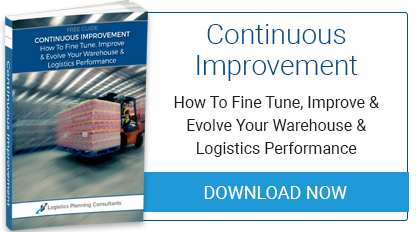 Operation
Operation
The operational objectives for the management of an automated system are to drive throughput and improve productivity and efficiency. In order to do this, information and data are required to inform the decision making. There is a lot of information and generally a range of reports available from the control system managing the automation. Care should be taken to determine the key facts and statistics required and the reports and dashboards designed to present this in a clearly defined manner. Automated systems can contain a wide range of technologies and methods of working, which require different methods of control and interaction with operatives. For example for goods to man systems the picks per tote is an important KPI, whereas for zonal picking systems the productivity of the operatives is important. The information and data collated should be analysed to ensure that the work / order sequencing is optimal and that the work patterns employed fit the level of activity. It is perfectly feasible to have different control strategies for different volumes of activity, e.g. for a peak or low volume period. These strategies could be employed at different periods of the day to suit shift patterns or different seasons. For example in a zonal picking system you may man each zone at peak, but have roving operators in quieter periods. The supplier of the automated system will have optimised the operation on installation and commissioning for the level and type of activity at the time. A review of the KPIs should be undertaken periodically to optimise efficiency. This may identify control system or physical changes required which should be discussed with the supplier.
Control
Control of the automation is usually via a SCADA (Supervisory Control and Data Acquisition) System accommodated in a control room. Typically this will display the operational layout via mimic diagrams with different colours to indicate the status of the equipment making up the system allowing the operation to be monitored and controlled. The control room will manage and monitor the flow of work and the response to incidents. The first line response is usually initiated by a status change on the mimic – something has gone from green to orange or red. This response can be by a jam buster, supervisor or nominated person in each area. Many incidents are due to carton or tote jams that can be simply dealt with by a trained operative. If it is a more complex problem maintenance will be called.
Maintenance
The key objective of maintenance is having the system available when you want to use it. There are two roles the response to incidents / breakdowns and preventative maintenance and servicing. The frequency and amount of servicing required will be identified by the supplier. Whether this is done by an in house team or outsourced access to the system has to be provided. This can be a challenge but it has to be managed to avoid an increase in incidents and breakdowns. Different systems require differing strategies depending on the equipment and length of operating periods. It is helpful if both operational management and the maintenance department understand and agree on the maintenance strategy to be employed. It will reduce friction particularly at peak periods.
Relationship With Supplier
Relationships with suppliers tend to work on two levels support and sales. Support is the more regular as it covers spares, services and maintenance. The amount of interaction depends on whether the maintenance is done in house or by the supplier. In older systems there will be the need to replace worn out equipment and to upgrade and refurbish, which will require input from the supplier. A business environment is rarely static and there is frequently the need to extend and modify the automated system to deal with growth in throughput or changes. These changes may be to the control systems as well as the physical system. Most suppliers have people who work with their installed customer base to update and extend their systems.


